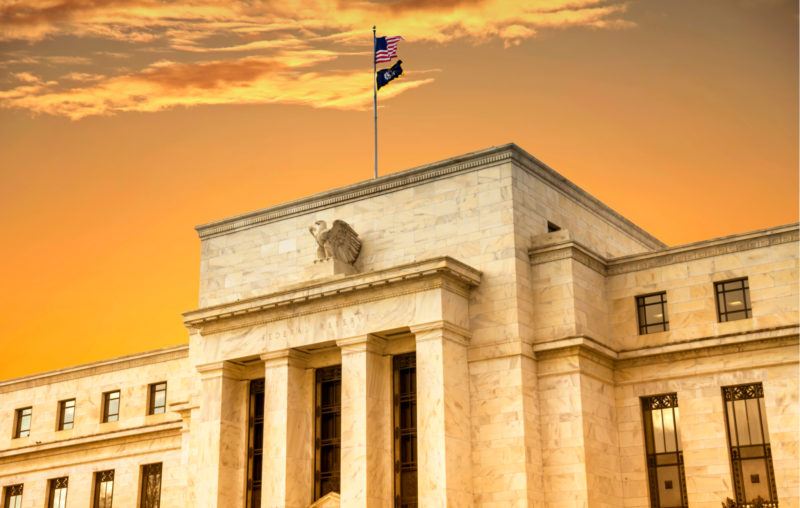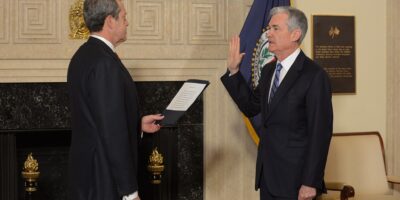The Fed Wants to Become a Financial Central Planner

Of all the policy responses to the COVID-19 pandemic, the Federal Reserve’s is the most extraordinary. Many people are unaware of the Fed’s recent behavior. Monetary policy is not the most visible of government actions, after all. But this time, the public cannot afford to ignore what the Fed is doing. In short, the US central bank has completely abandoned the long-established norms and procedures for conducting monetary policy. Its new interventions threaten to undermine the integrity of financial markets for years to come.
Some of what the Fed has done is in line with monetary policy orthodoxy. For example, it has cut both its target for the federal funds rate (the usual “policy lever” for conducting monetary policy) as well as the discount rate (the interest rate the Fed charges for loans). It has also cut reserve requirements. Read any monetary economics textbook, and these three policy options will be prominently discussed.
However, and more worryingly, the Fed is also revamping some of its programs from the 2007-8 financial crisis. It has resumed direct purchases of longer-term government debt and mortgage-backed securities, a policy known as “quantitative easing.” It also brought back a host of other loan facilities, such as the Primary Dealer Credit facility, whereby the Fed makes loans directly to its most important counterparties, and the Term Asset-Backed Securities Loan Facility, through which it extends loans to those with specific kinds of collateral.
These were troubling enough a decade ago, and it does not bode well that they’re back. But in terms of importance, they pale in comparison to the Fed’s truly novel policies.
In an unacceptable breach of established central banking practices, the Fed is now making loans directly to US corporations. The vehicle it uses to do this is called the Primary Market Corporate Credit Facility, and through it the Fed is purchasing newly issued corporate debt. The Fed also uses the Secondary Market Corporate Facility to purchase existing corporate debt as well as exchange-traded funds that invest in corporate debt.ly plans to channel up to $750 billion through these facilities.
In addition, there’s the Main Street Lending Program: up to $600 billion in small- and medium-sized business loans. In short, the Fed is no longer maintaining any sort of pretense to limiting the kinds of assets it buys, or the loans it will make. The entire financial sector is now fair game for the Fed, as is the corporate-business sector. Gentlemen, start your engines!
Here’s another thing: for each of these programs, the Treasury is committed to backstopping up to $75 billion in losses. In other words, if these “investments” go bad, it’s ordinary taxpayers who have to pay for it.
All told, the Fed’s COVID-19 response program comes to $2.3 trillion. But there is no reason to suppose it will stop there. As has been the case since the 2007-8 crisis, the Fed’s balance sheet is now expected to backstop anything and everything. Fed Chairman Jerome Powell admitted the extraordinary breach of precedent when he remarked, “We are deploying these lending powers to an unprecedented extent…We will continue to use these powers forcefully, proactively, and aggressively until we are confident that we are solidly on the road to recovery.” Powell sounds confident, but he has no reason to be. These actions by the Fed portend only disaster.
In macroeconomic theory, there is a clear distinction between monetary policy and fiscal policy. Monetary policy is about giving markets the liquidity it needs to allocate resources on its own. Fiscal policy, in contrast, is direct resource allocation. For much of its history, the Fed conducted monetary policy by limiting its asset purchases and sales to short-term government debt. Because short-term government debt was a fairly close substitute for cash in most financial portfolios, the Fed could use these assets to change the money supply with minimal allocative effects.
The Fed started to move away from the “Treasuries only” policy in the financial crisis, and now the chickens are coming home to roost. The precedent set by the Fed during the 2007-8 crisis is now being used to destroy any meaningful distinction between monetary and fiscal policy.
The Fed is directly allocating resources. This is fiscal policy. Period.
The problem—and it’s a serious one!—is that the Fed is an archetypal Big Player: it’s hierarchical, not bound by any meaningful rules, and can significantly affect market outcomes. Private financial organizations, such as banks, are ultimately constrained by profitability requirements. The Fed is not; because it has a monopoly on the creation of high-powered money, it can generate purchasing power out of thin air and use it to buy whatever it likes. The more the Fed acts as a credit allocator, instead of a liquidity provider, the more control the Fed has over the entire system’s balance sheet. The Fed undermines market discipline by completely subjugating the pricing process for financial assets to the whims of whoever sits on the Fed’s Board of Governors. This makes markets much less predictable, and much more reliant on Fed largesse.
There’s no point in mincing words: what the Fed is doing is a significant move to outright financial central planning. As always, this sows the seeds of future crises. The dynamics of interventionism tell us that misguided government policy, in trying to solve one problem, inadvertently creates more problems down the road. In this case, Fed policy permanently impedes the ability of financial markets to operate smoothly. Expect political considerations, rather than market discipline, to play an increasingly large role in the allocation of credit for the foreseeable future.
To Chairman Powell, and all those who sit on the Board of Governors, I have only one thing to say: shame on you. You should know better. Your actions in recent weeks are flagrant violations of the rule of law.
To monetary and financial economists everywhere, I implore you: the public needs you now, more than ever, to explain what the Fed is doing. Reasonable people can disagree about the means and ends of monetary policy. But this is crony capitalism, plain and simple. Don’t let Fed apologists get away with abusing their credentials to blind the public with (pseudo)science.
To everyone as outraged by this process as I am: it’s time we shouted far and wide what the Fed is up to. If we let them get away with it, politicians and macroeconomic policy experts will be able to control financial markets, and hence our lives, to a degree never before obtained in a free society. We must demand the Fed restrict itself to the confines of ordinary monetary policy. There is no stable outcome between this and a completely politicized financial sector. This is our Little Round Top. We must “hold the ground at all hazards.”









